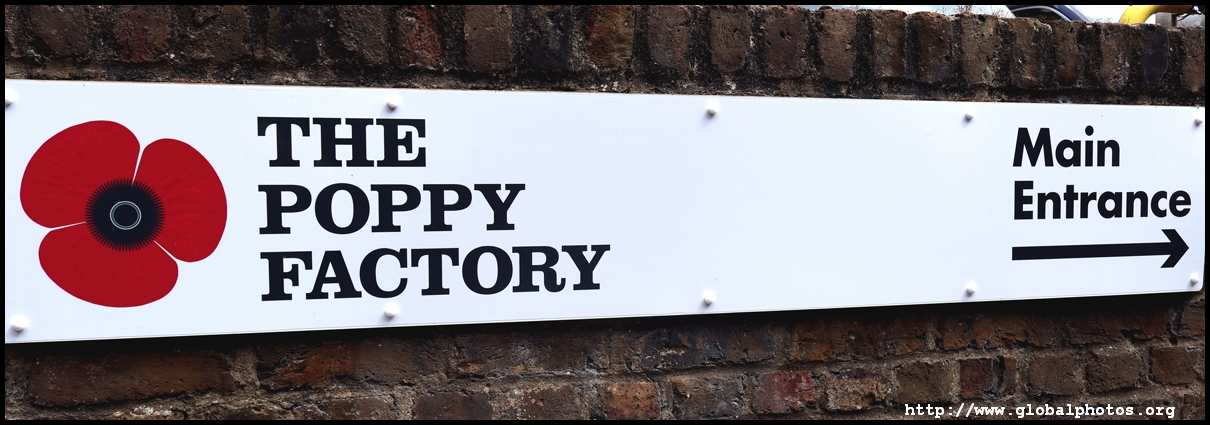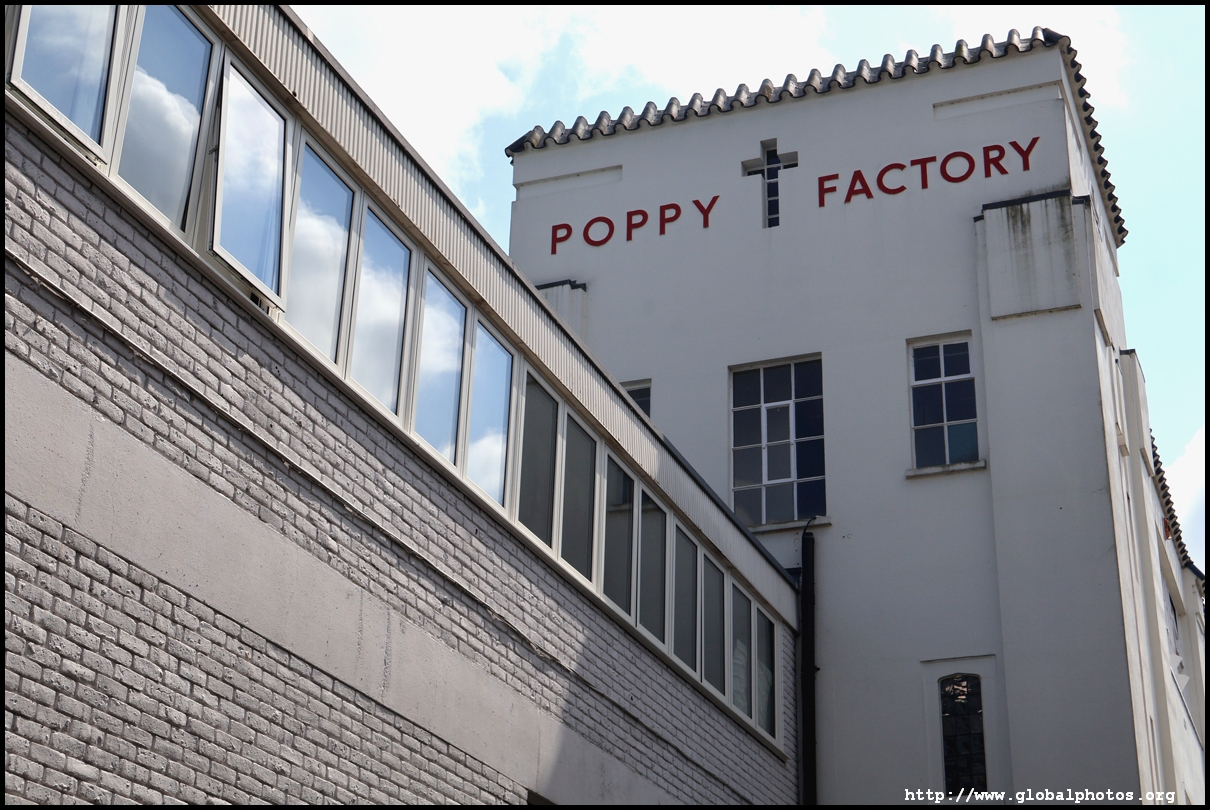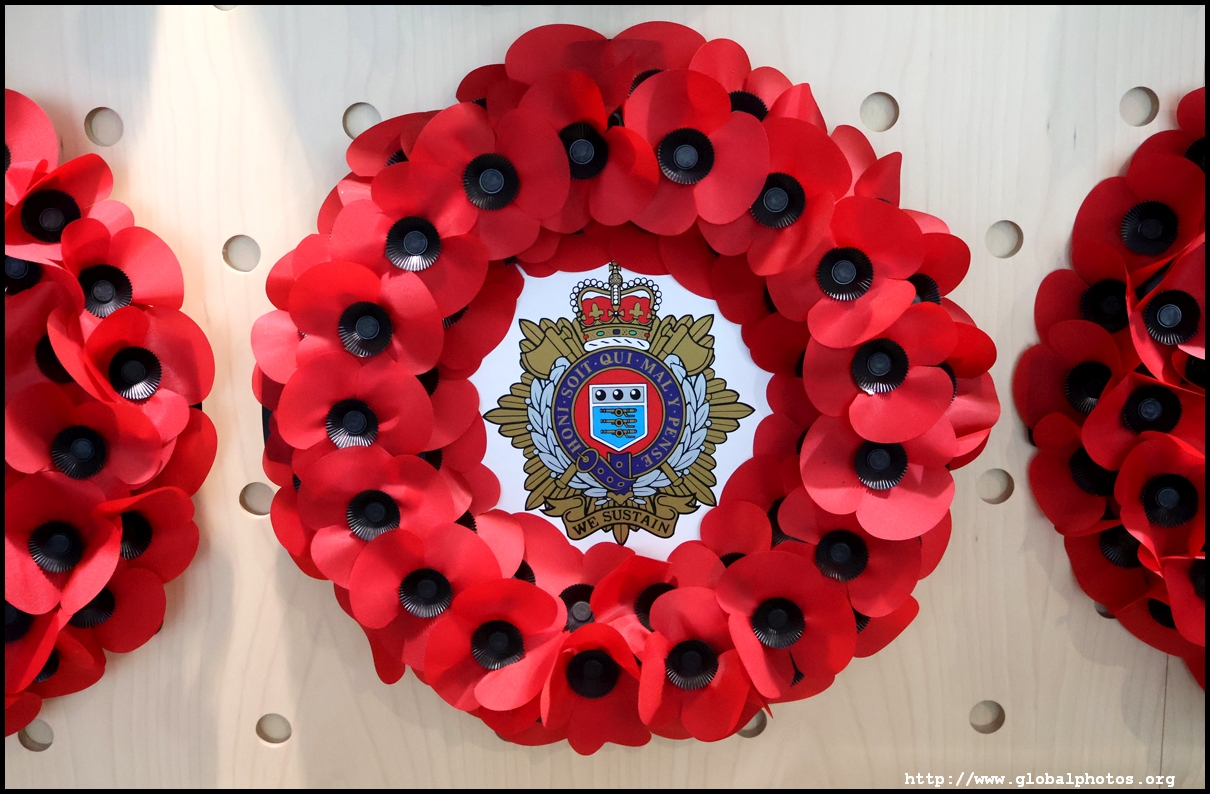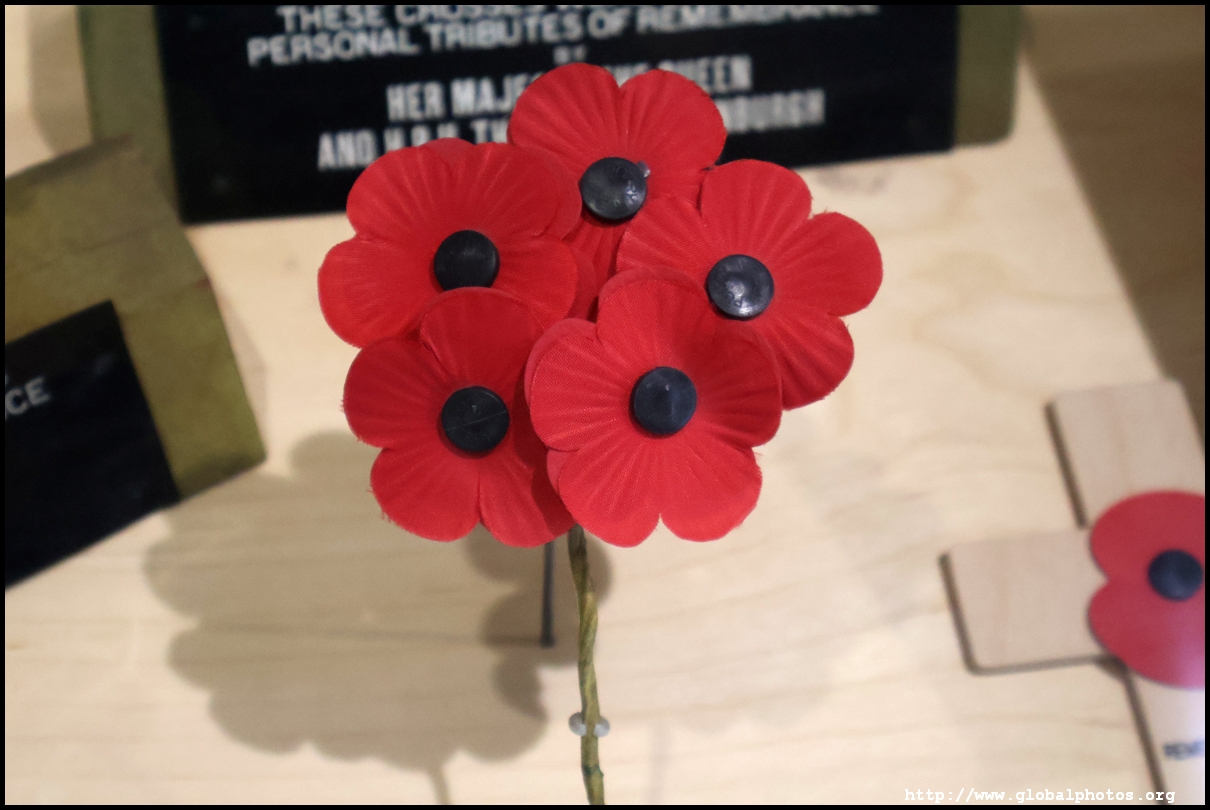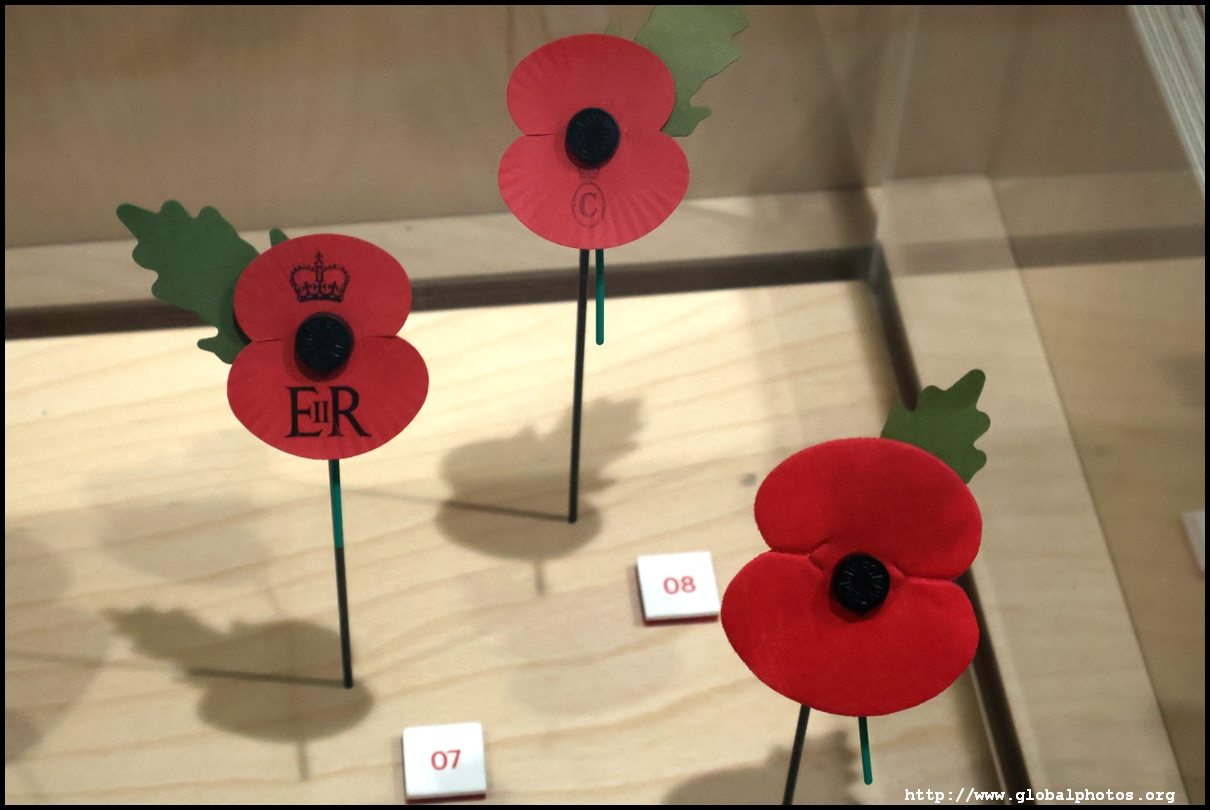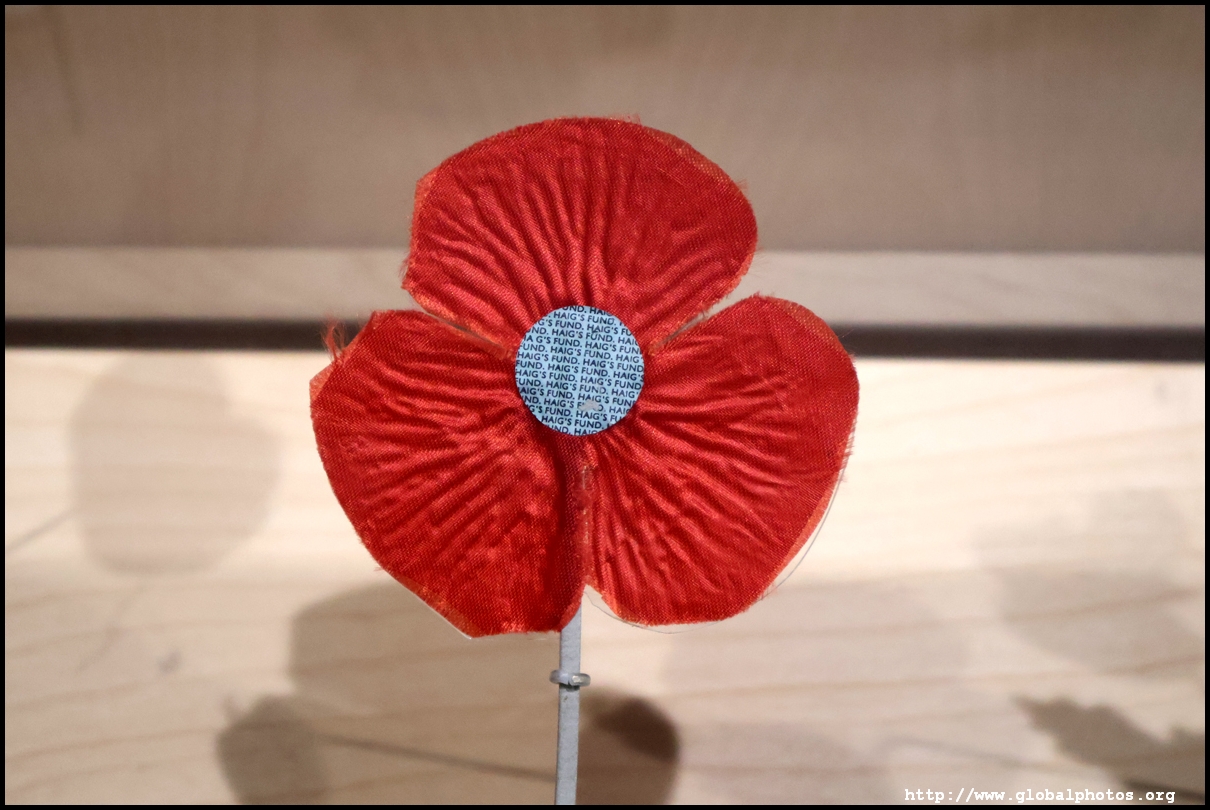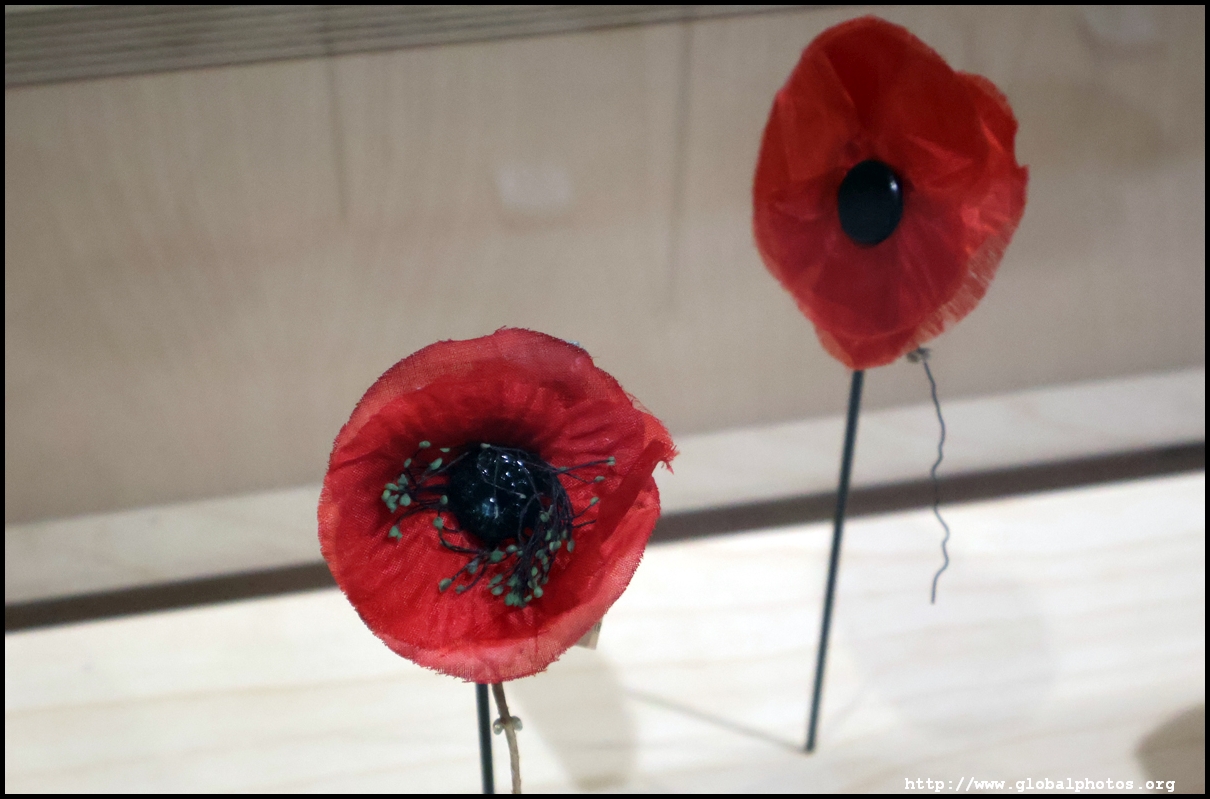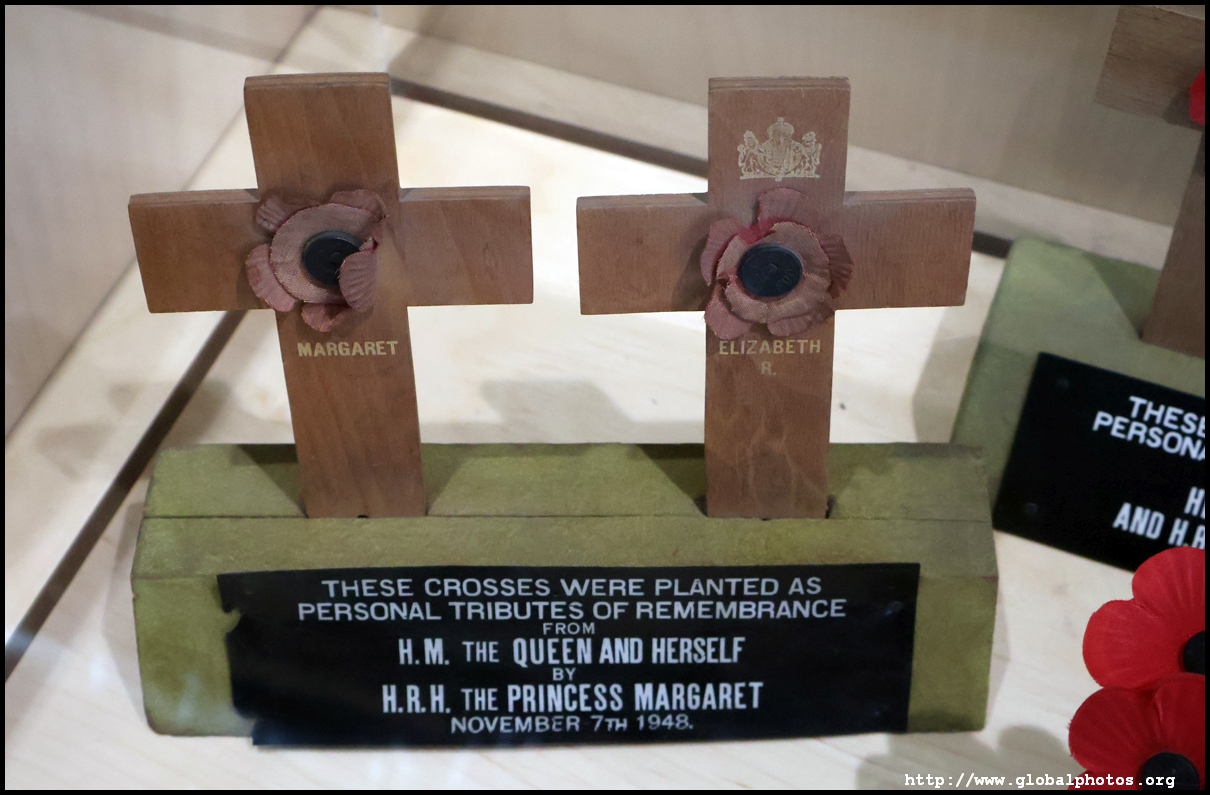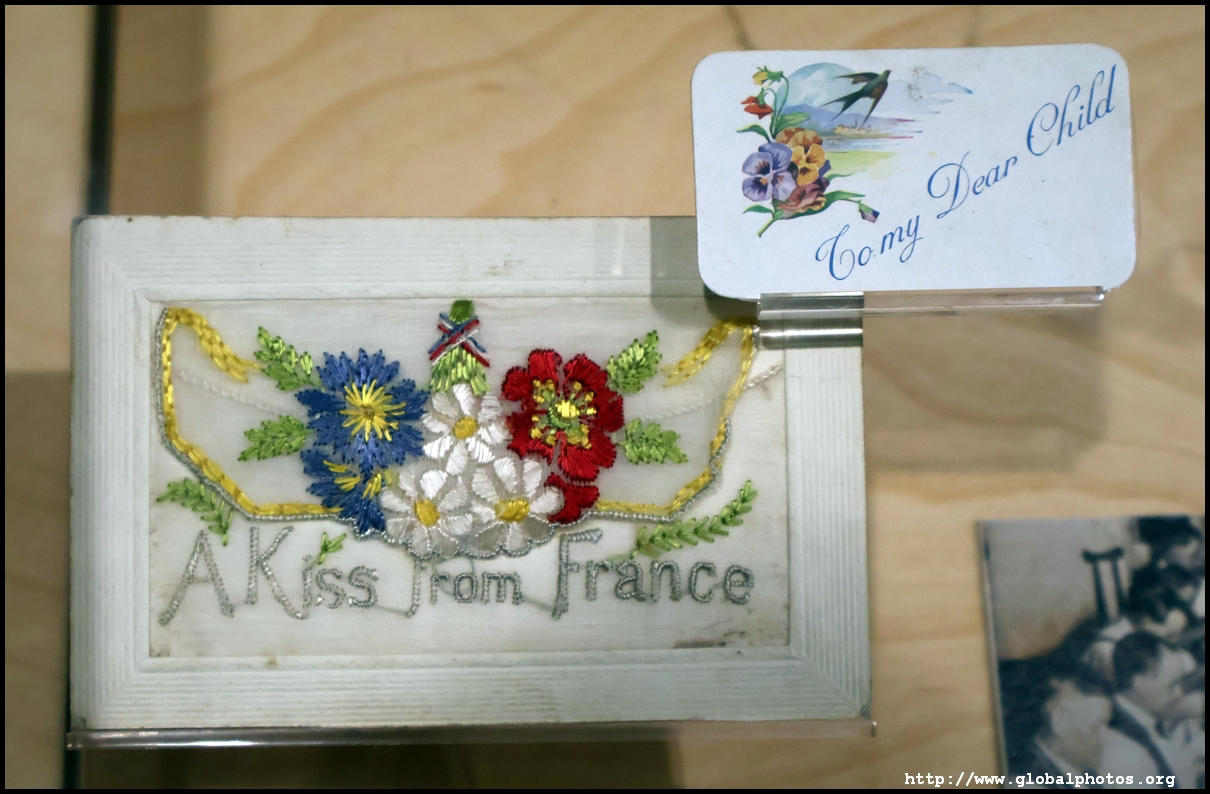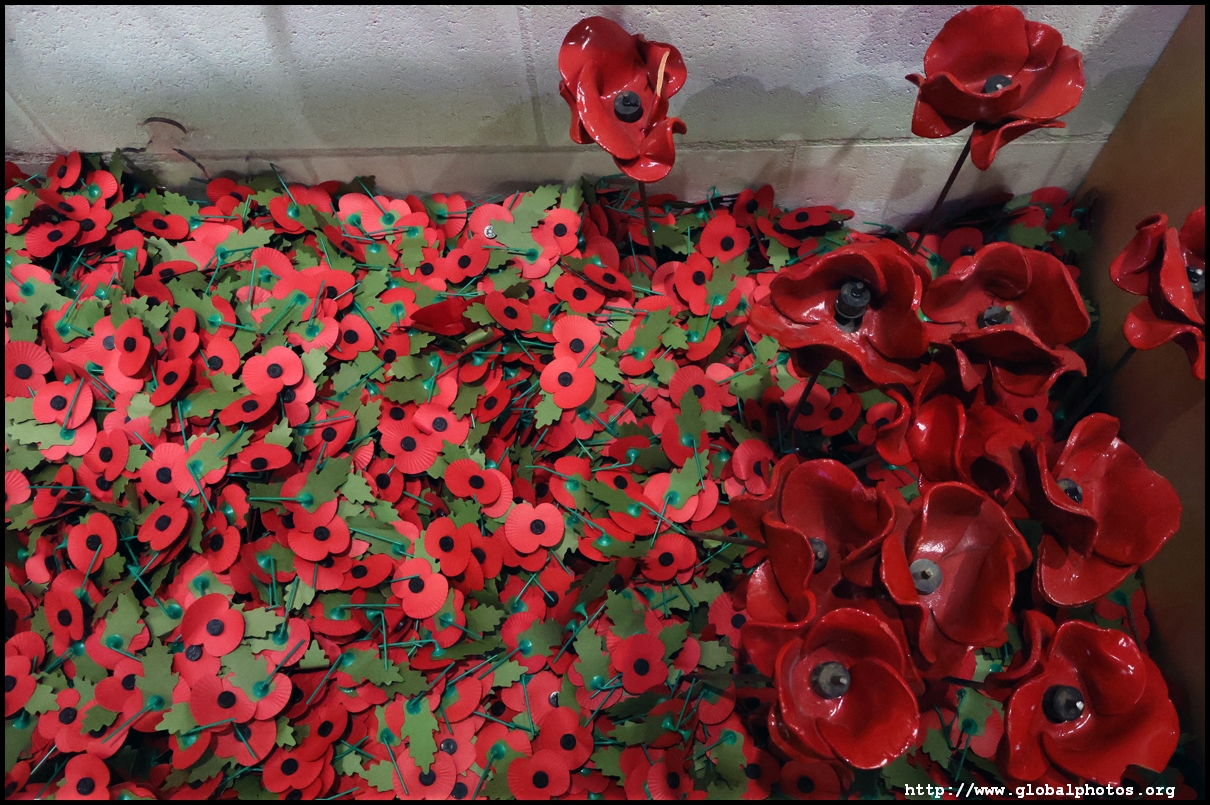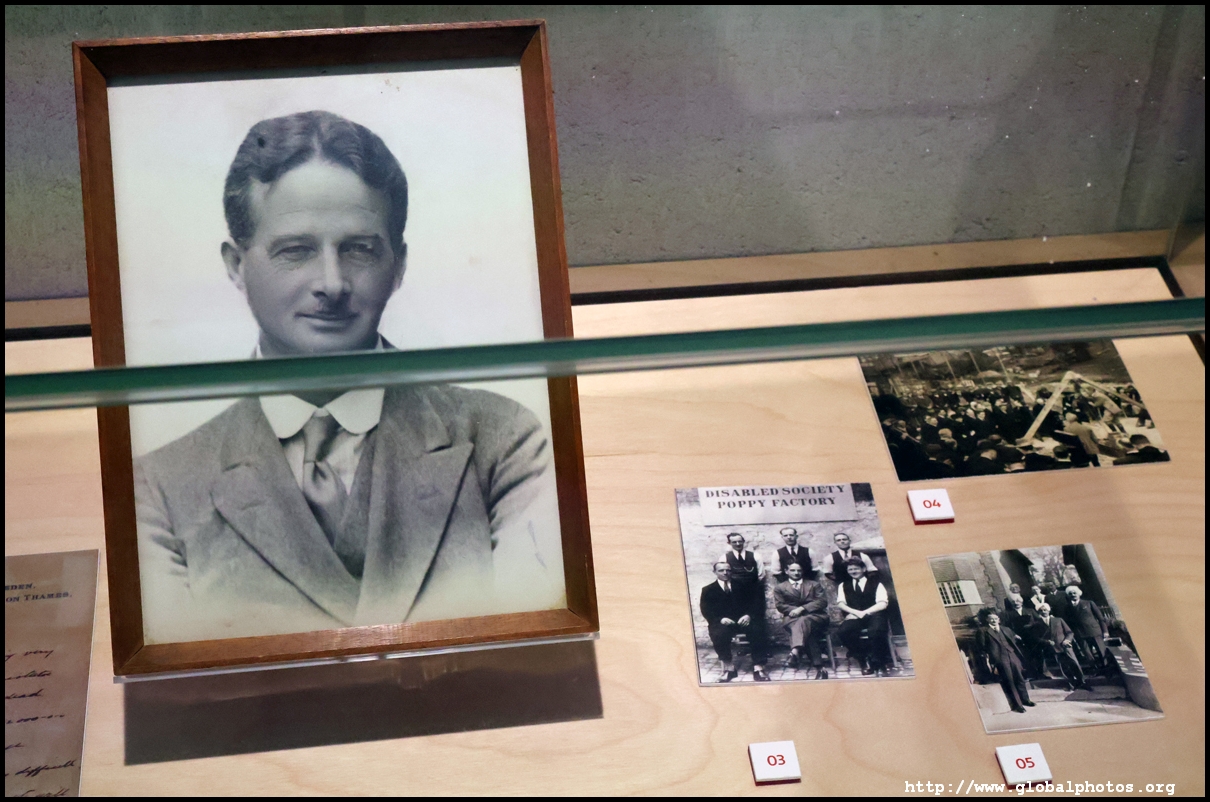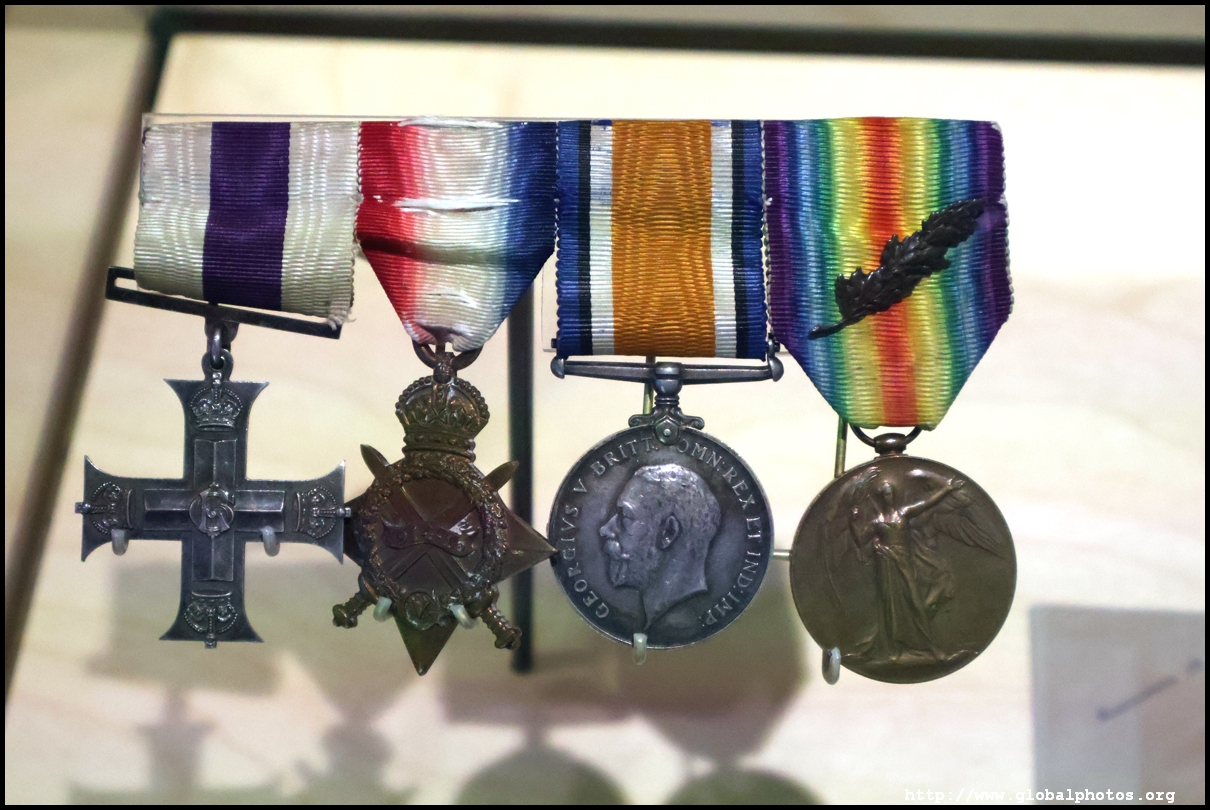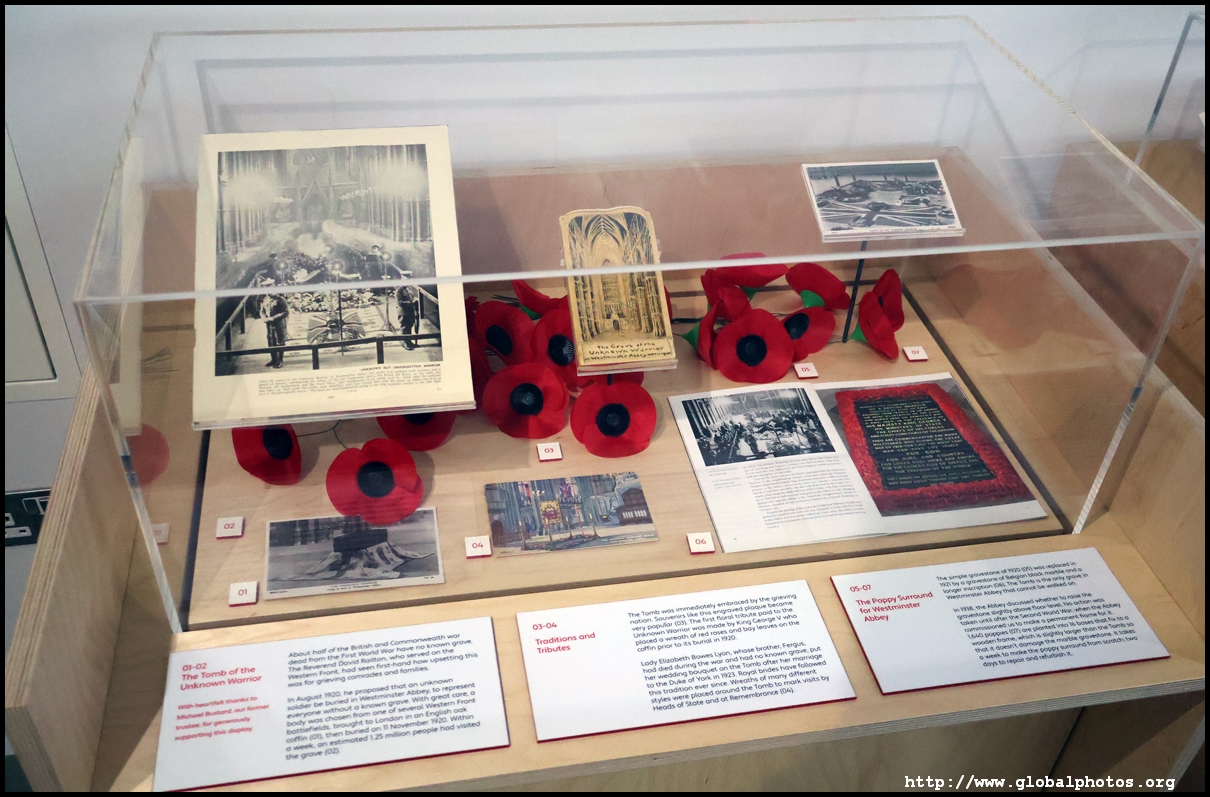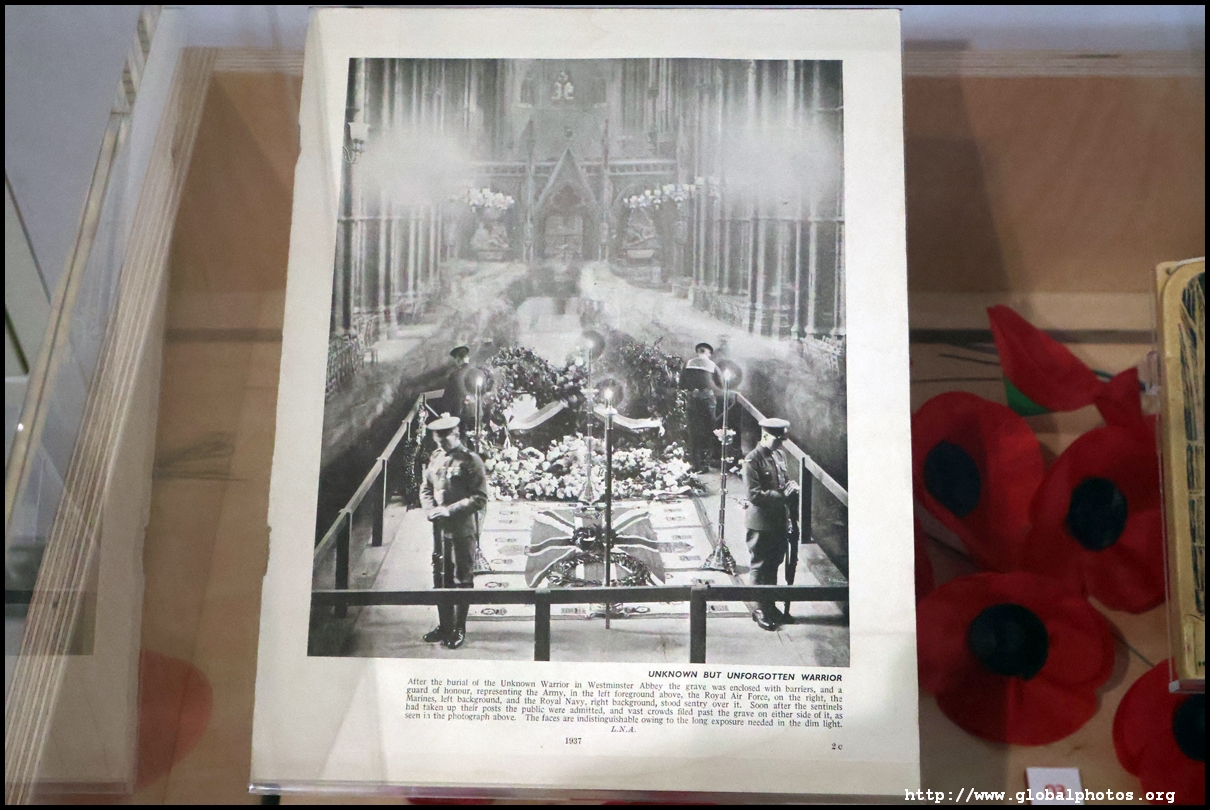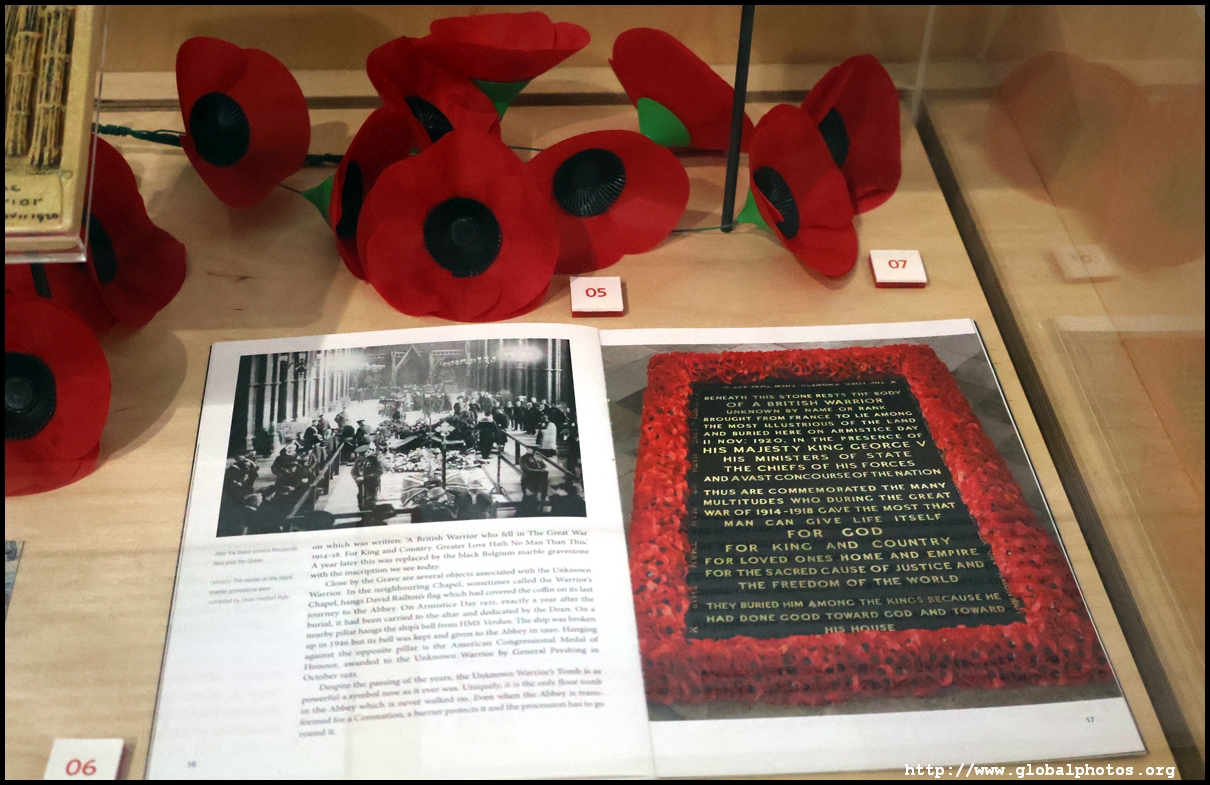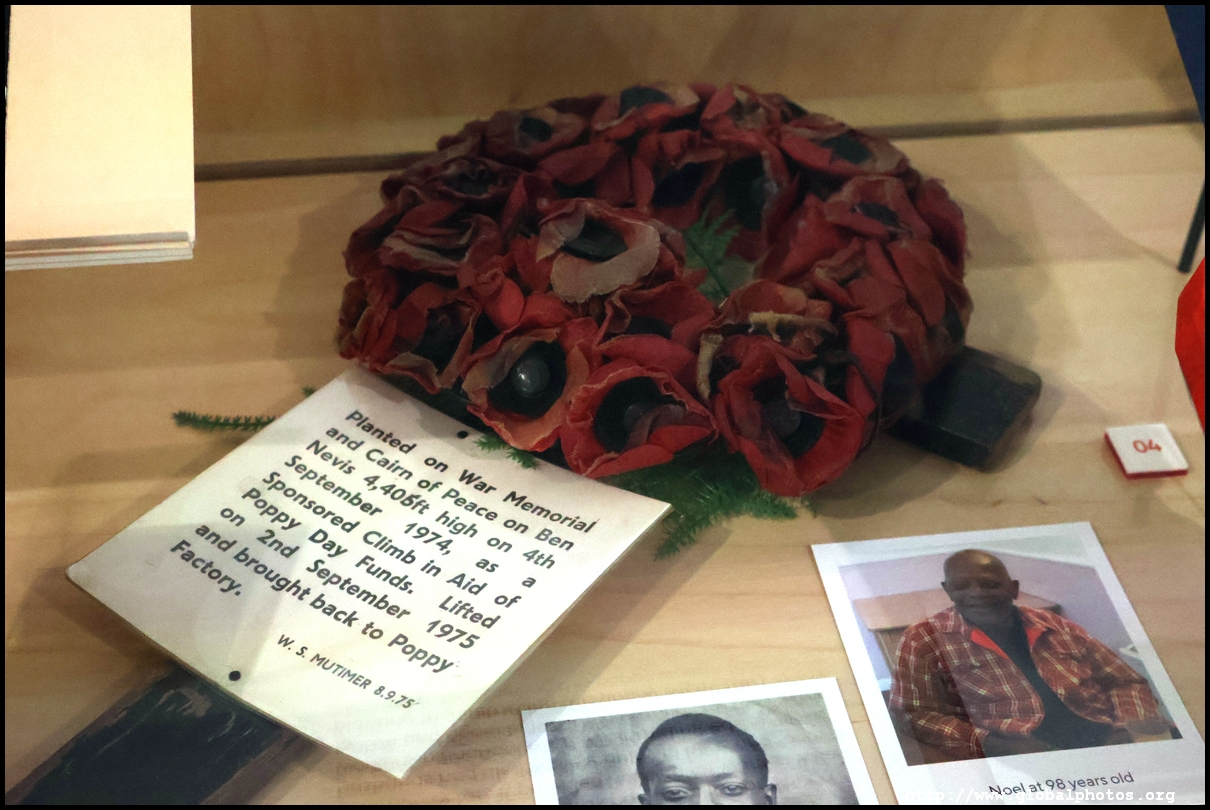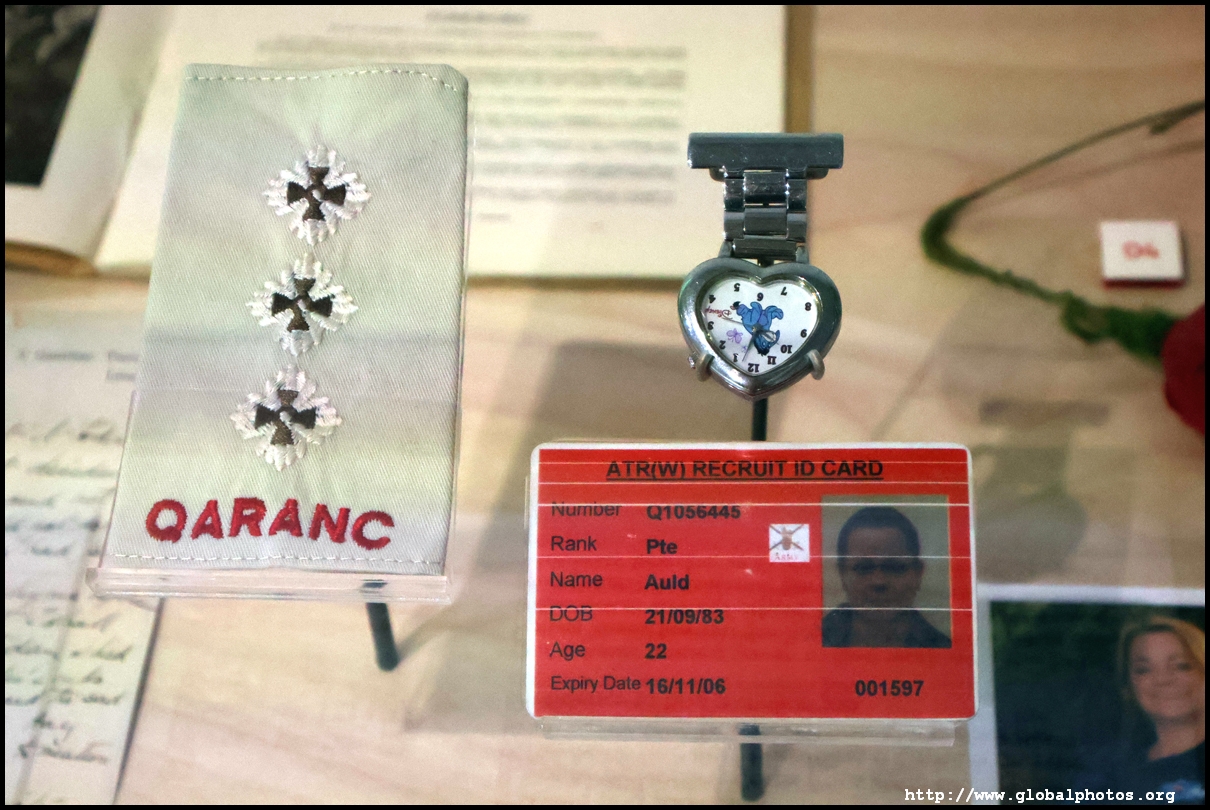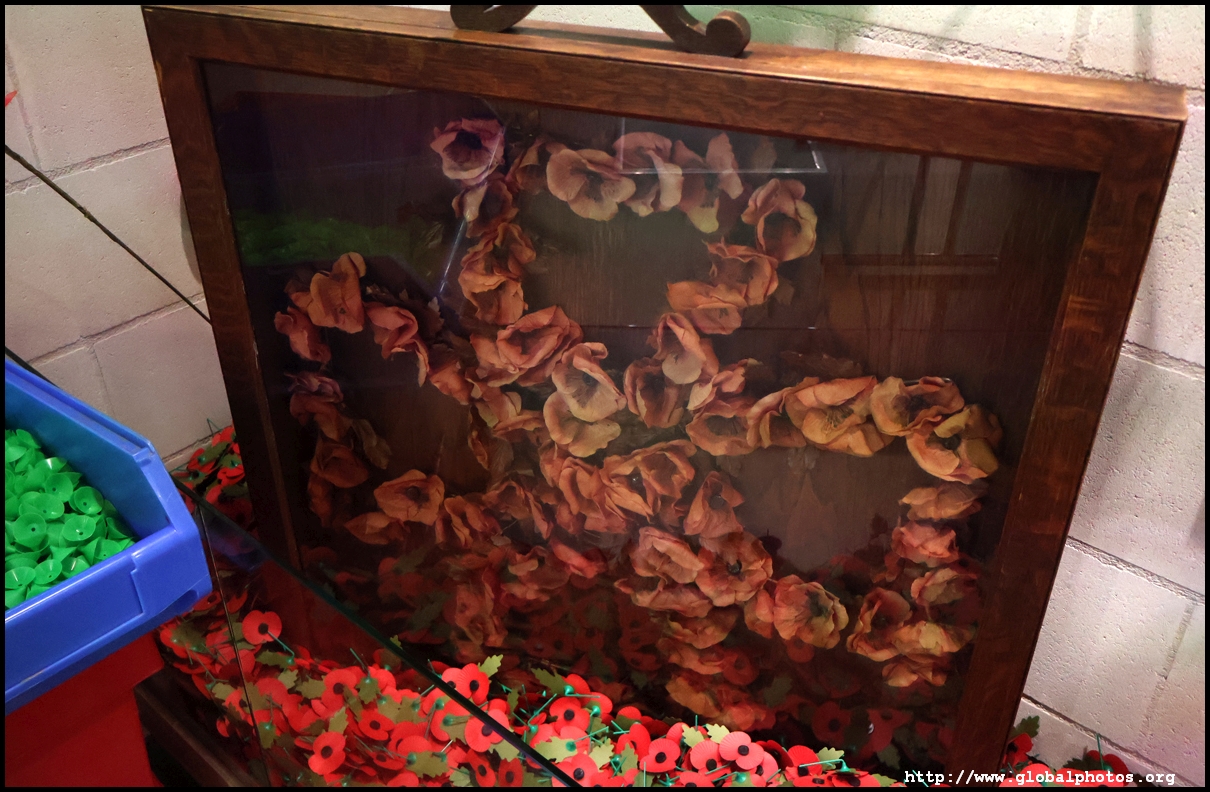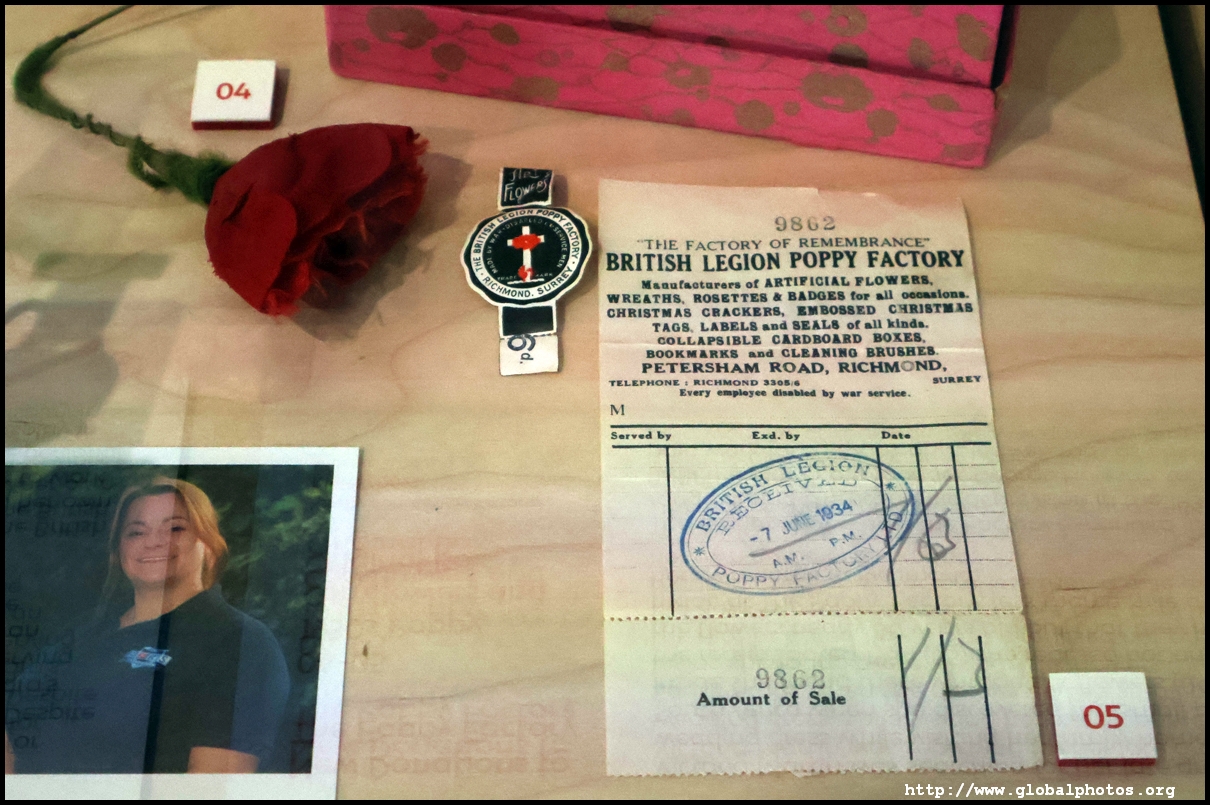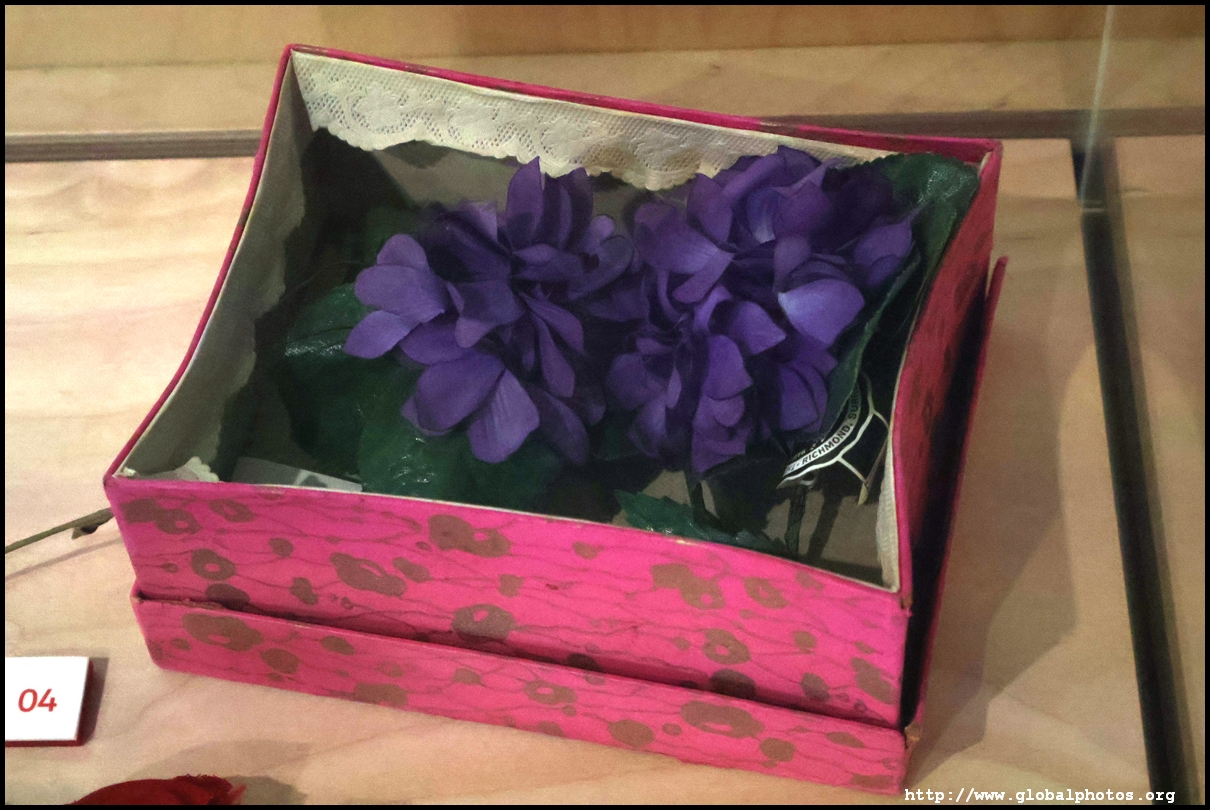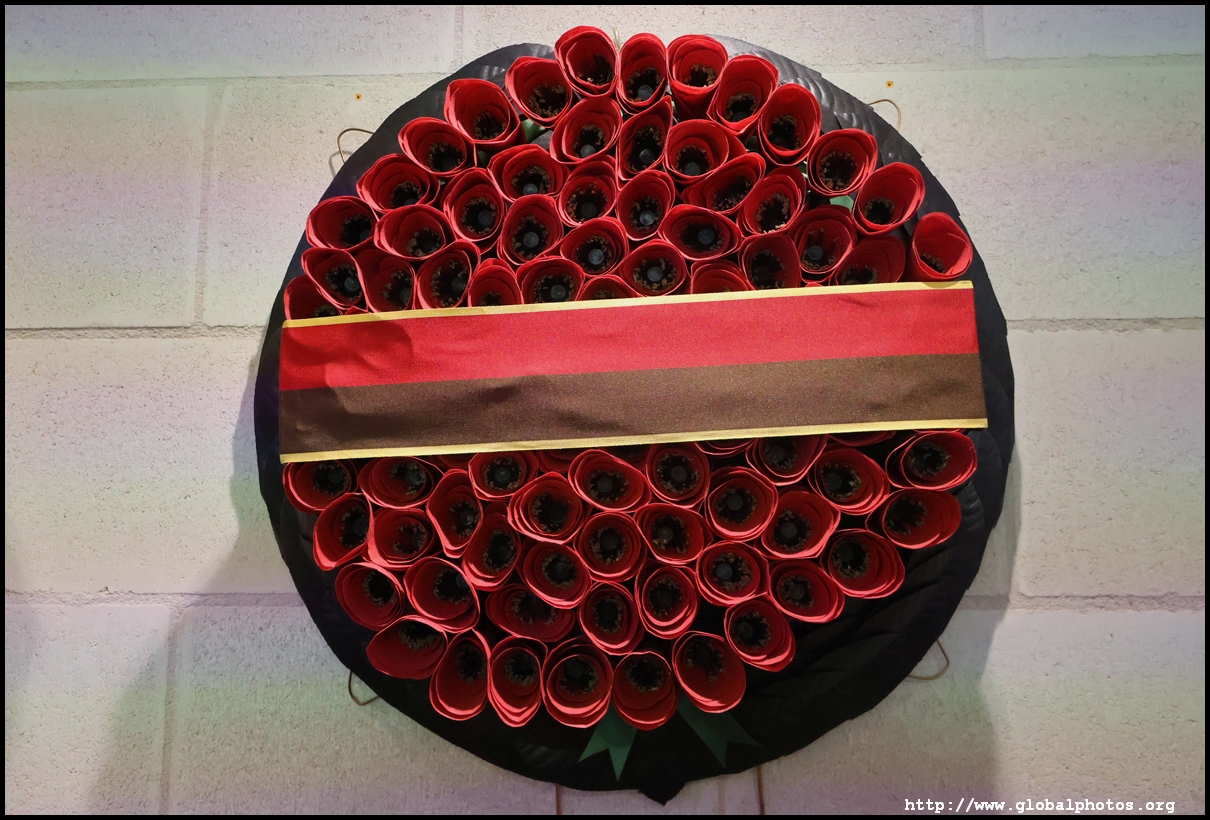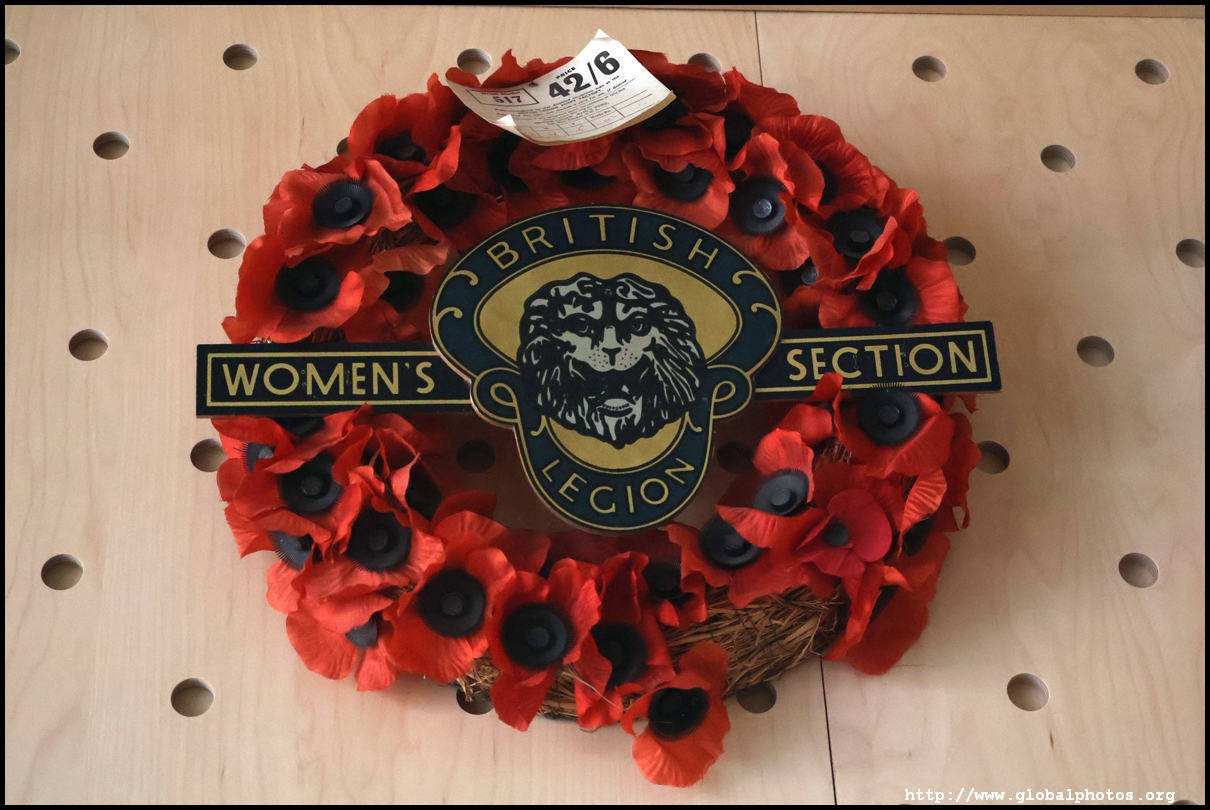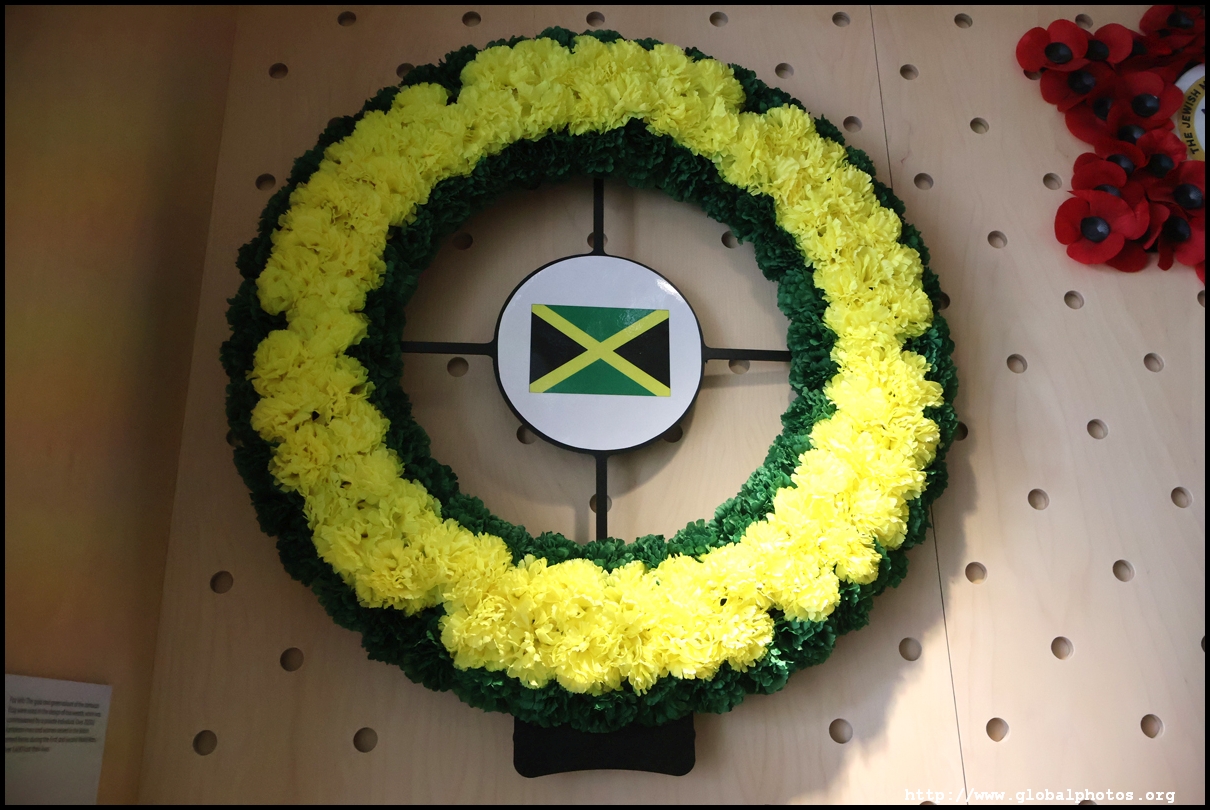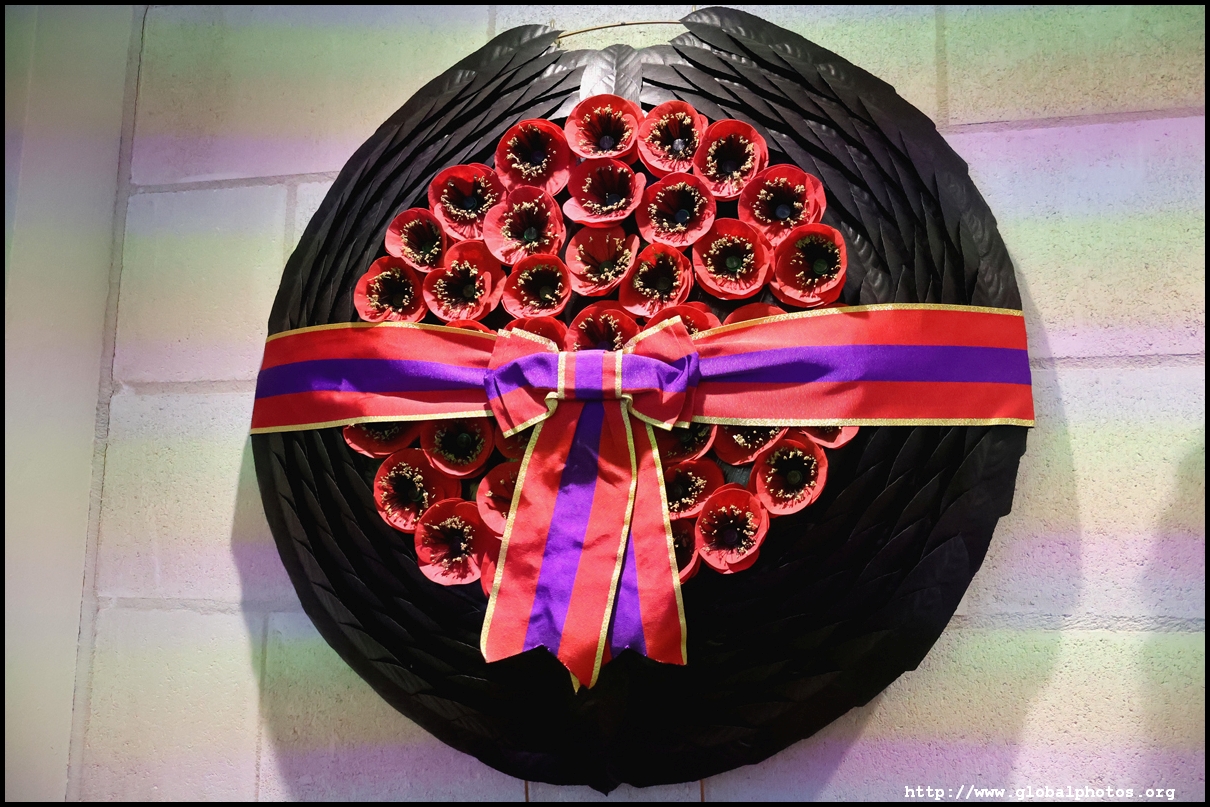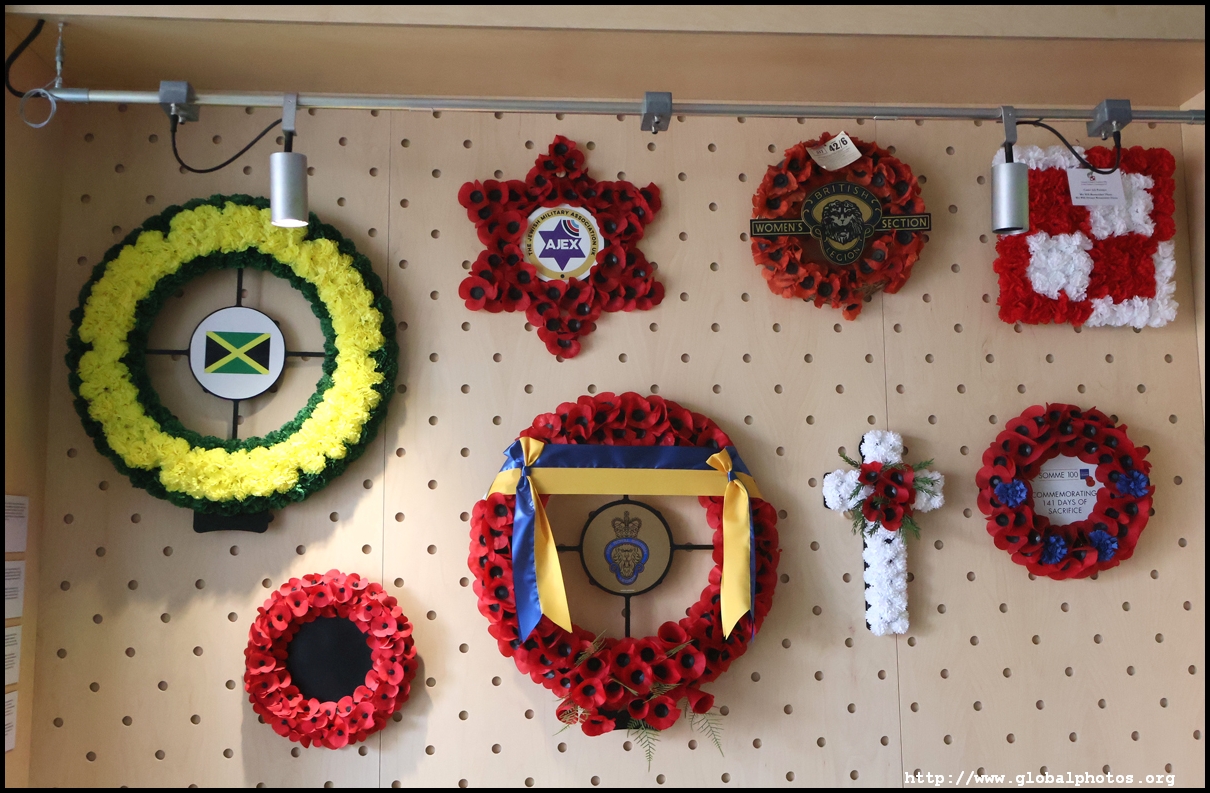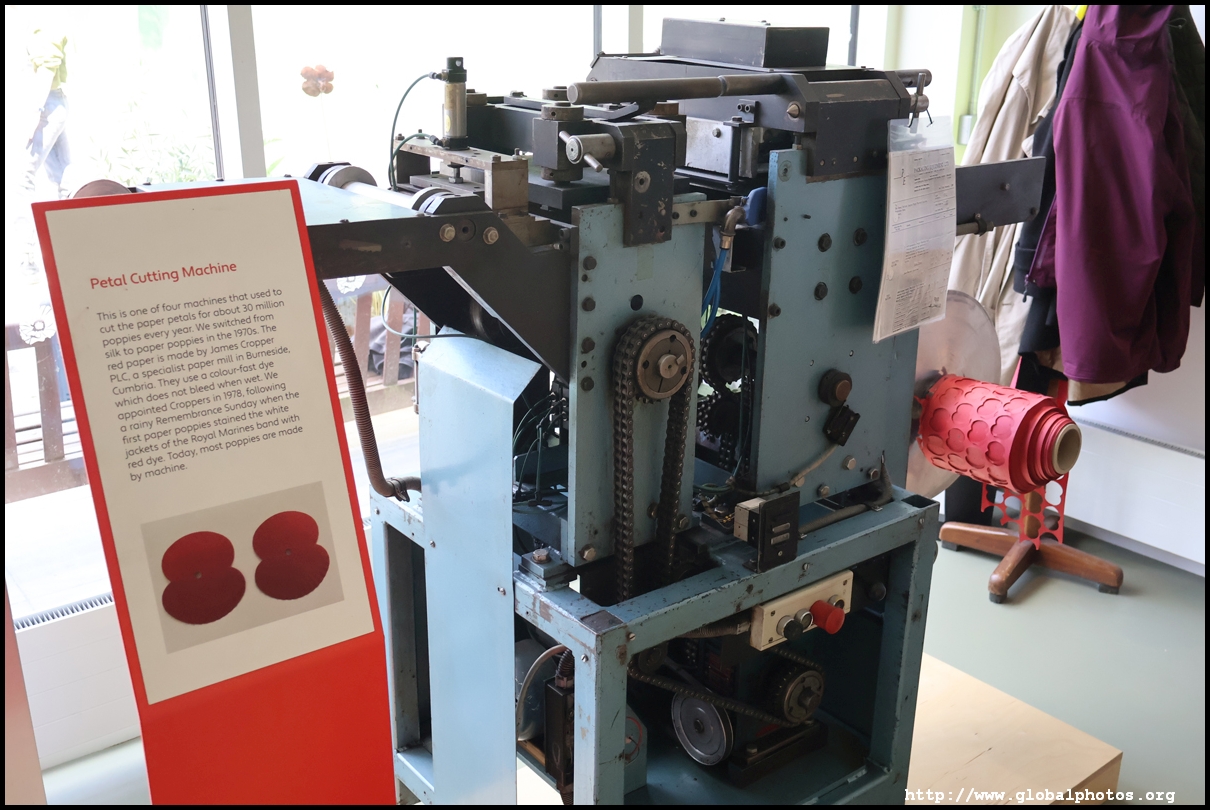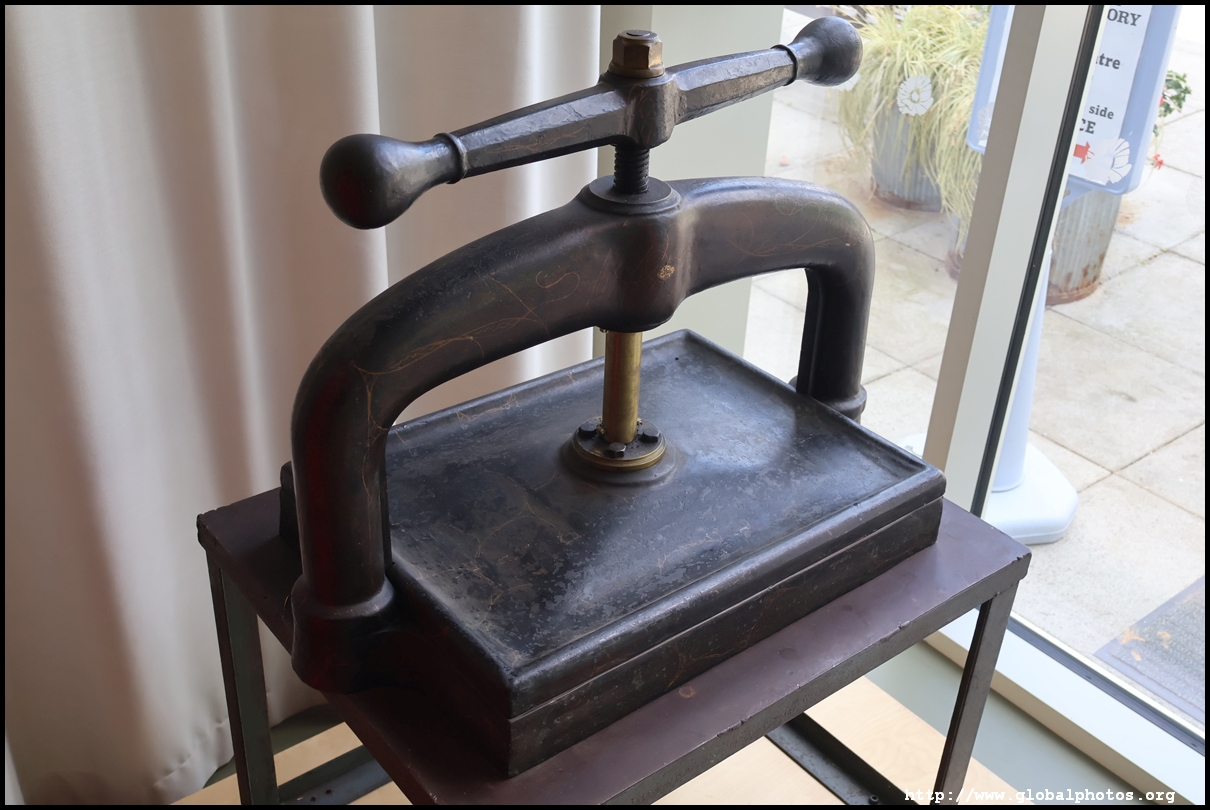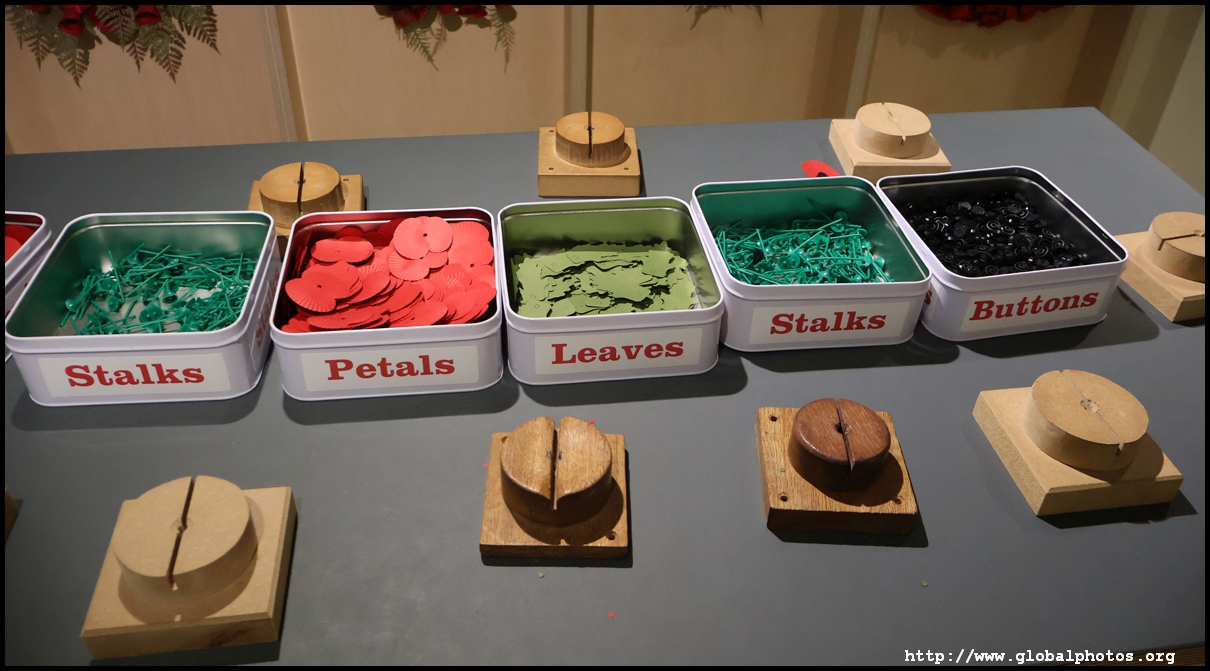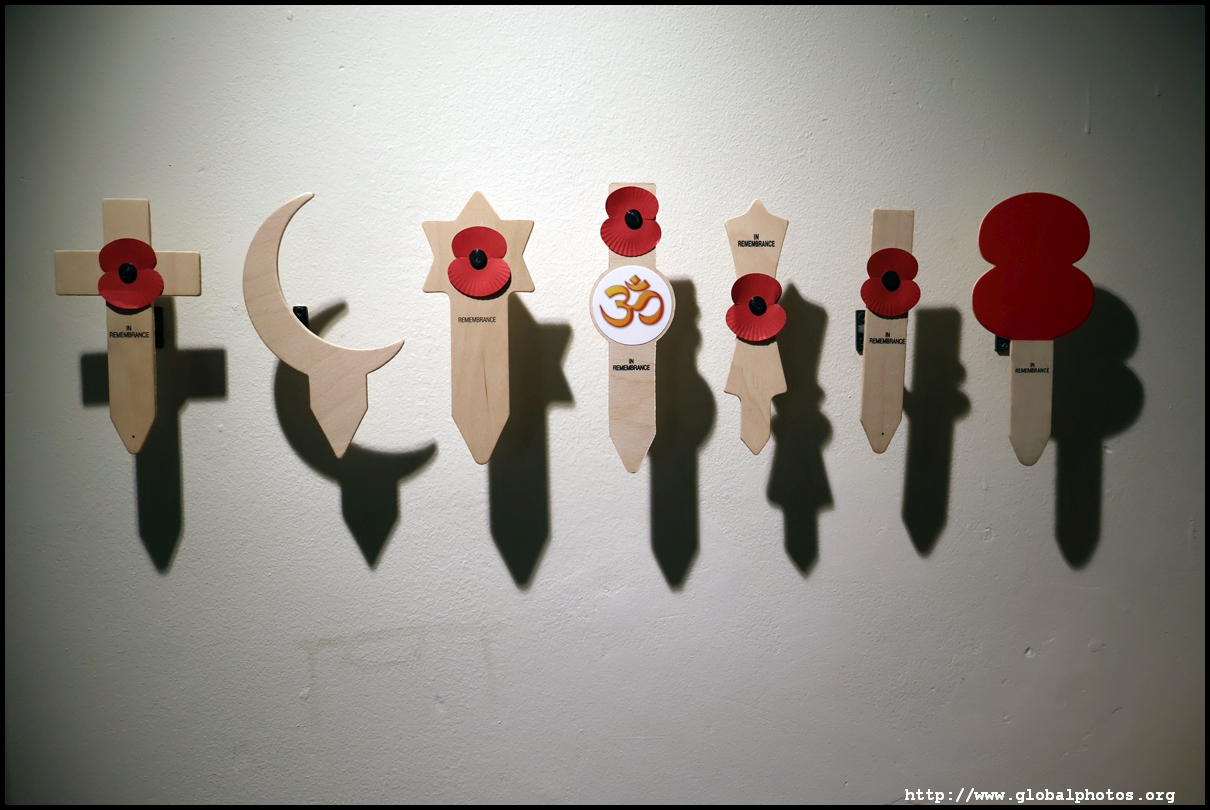London Photo Gallery - Art Exhibitions & Special Events
The Poppy Factory VE Day Open Afternoon (May 8, 2025)Poppies became a symbol of remembrance shortly after World War I. They were first sold in Britain in 1921 to raise money for the Earl Haig Fund which supported ex-servicemen and families of those who died in war. Founded in 1922 by a British Army officer to employ veterans injured in World War I, the Poppy Factory continues to support our veterans adapt to life in the civilian world and overcome barriers to work. By 1931, they were making almost 30 million poppies a year. The factory moved to Richmond in 1926, and a new building was completed in 1933. Today, the factory primarily focuses on producing wreaths by hand. As part of VE Day commemorations, the factory opened to the public that afternoon with exhibits, factory tours, and a chance to make your own poppy.
There are a few display cases with various items. The photo shows George Howson, who founded the factory and was granted 2000 pounds to set it up. The next photo shows his various medals from World War I.
To generate more income to pay as many disabled workers as possible, the factory diversified beyond poppies and wreaths into other items, such as badges, jigsaws, and even Christmas crackers. During World War II, they also helped the war effort by making radio parts for planes.
This fire screen with poppies inside was used as a table decoration in 1929 at a dinner for 318 Victoria Cross recipients that was hosted by the Prince of Wales.
The receipt dated 1934 shows these silk flowers were made at the factory. During the depression, the factory expanded its production to provide as many employment opportunities as possible.
On display are also a number of special wreaths. The first one is HM the Queen's wreath with 95 poppies. The stamens are made from broom bristles dipped in glue and sawdust to appear like pollen.
HM the King's wreath was made for Remembrance Day in 2022 with an inner circle of 41 poppies.
There are also a few historic machines used to make poppies at the front door. This petal cutting machine was 1 of 4 that produced about 30 million poppies annually using red paper from James Cropper PLC. The colour-fast dye does not bleed when it gets wet, a response to problems from the first paper poppies that stained white jackets in the late 1970s.
The screw printing press was designed to copy letters and documents. This machine was believed to have printed Regimental badges onto cards for wreath centres and rosettes.
Visitors could also make their own poppies. To give you a sense of how injured veterans do it, use only one hand and assemble the pieces one by one with the wood block as an aid.
| |
To re-use these photos, please notify me by email : asiaglobe@yahoo.com.hk.
